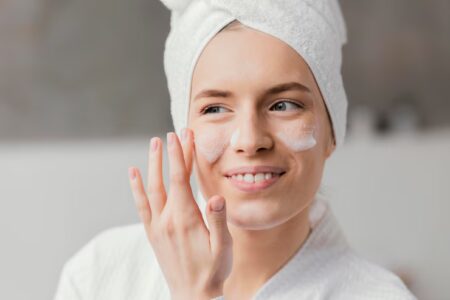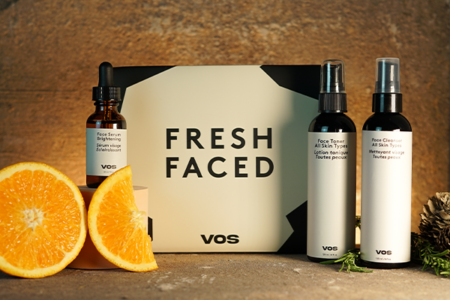Maintaining healthy skin begins with a simple yet effective skincare routine. The focus should always be on taking proper care of the top layer of skin, which acts as the body’s first defense against environmental elements. A carefully planned regimen that emphasizes cleansing and moisturizing helps maintain skin balance and supports its natural barrier.
This guide will walk you through how to build a skincare routine centered on cleansing and moisturizing the skin’s surface to encourage healthier skin over time.
Why the Top Layer of Skin Needs Special Care
The outermost layer of the skin, known as the stratum corneum, plays a critical role in protecting the skin from dehydration, bacteria, and other irritants. When this layer is not properly maintained, it can lead to dryness, sensitivity, and skin texture issues. Crafting a skincare regimen to cleanse and moisturize the top layer of skin supports skin hydration, prevents irritation, and promotes a smooth appearance.
The Essential Steps in a Skincare Routine
Building a consistent skincare routine ensures that the skin stays clean, hydrated, and protected throughout the day. Below are the key steps to follow.
Step 1: Gentle Cleansing
Cleansing is the first and most important step in a skincare routine. A mild cleanser removes dirt, oil, and surface buildup without stripping away the skin’s natural moisture.
Choosing the Right Cleanser
- Opt for cleansers with non-irritating ingredients.
- Gel or cream-based cleansers often work well for daily use.
- Avoid harsh scrubs that can damage the top layer of skin.
A cleanser should leave the skin feeling refreshed but not dry or tight. Proper cleansing helps prepare the skin for the next steps in the skincare regimen.

Step 2: Moisturizing for Surface Hydration
After cleansing, it is essential to replenish moisture. Moisturizing helps lock in hydration and supports the skin’s natural barrier.
Selecting a Moisturizer
- Lightweight moisturizers are suitable for daily use.
- Look for ingredients such as glycerin, ceramides, or hyaluronic acid, which help maintain hydration in the skin’s upper layer.
- For sensitive skin, choose fragrance-free options.
Moisturizing consistently helps the top layer of skin retain its protective qualities and improves its ability to defend against external stressors.
Step 3: Sun Protection
Even though sun protection is not a direct moisturizing step, it is crucial in any skincare routine. The skin’s top layer is vulnerable to sun damage, which can weaken its structure.
How to Apply Sunscreen
- Use broad-spectrum sunscreen with at least SPF 30.
- Apply as the final step in the morning skincare routine.
- Reapply every two hours if exposed to sunlight.
Protecting the skin from UV damage preserves its hydration levels and maintains its appearance over time.

Supporting Skin Health with Additional Practices
In addition to cleansing and moisturizing, there are a few more practices that support the skin’s overall health and appearance.
Regular Exfoliation
While daily cleansing is necessary, occasional exfoliation helps remove dead skin cells that can build up on the top layer of skin. Over time, this can promote smoother skin texture.
Best Practices:
- Exfoliate no more than twice a week.
- Choose mild exfoliating agents that do not scratch the skin.
- Avoid excessive exfoliation that can harm the skin barrier.
Proper Hydration and Nutrition
External skincare is important, but internal care plays a major role in skin health as well. Drinking enough water and following a balanced diet help the skin stay hydrated from within.
Recommendations:
- Drink plenty of water throughout the day.
- Include foods rich in healthy fats, vitamins, and antioxidants.
These habits support the skin’s natural ability to maintain moisture and protect its surface.
Adjusting the Skincare Routine for Seasonal Changes
Skin needs often vary with changes in weather. In colder months, skin tends to lose moisture more quickly, while warmer seasons might bring increased oil production.
Seasonal Skincare Tips:
- In winter, use thicker moisturizers to prevent dryness.
- In summer, switch to lighter, water-based products.
- Monitor how your skin reacts to the environment and adjust products as needed.
Common Mistakes to Avoid in a Skincare Routine
Building an effective skincare routine to cleanse and moisturize the top layer of skin also means avoiding some frequent mistakes.
Over-Cleansing
Washing the face too often can lead to dryness and irritation. Cleansing twice a day, morning and evening, is typically sufficient.
Skipping Moisturizer
Even those with oily skin need to moisturize. Skipping this step can actually lead the skin to produce more oil to compensate for the lack of surface hydration.
Ignoring Product Ingredients
It’s important to check product labels. Some ingredients, such as alcohol or artificial fragrances, can harm the skin barrier over time, especially when used frequently.
Conclusion
Crafting a skincare regimen to cleanse and moisturize the top layer of skin does not require complex steps or a long list of products. The focus should remain on selecting gentle, effective products and following a consistent routine that supports the skin’s natural defenses.
By paying close attention to cleansing and moisturizing, protecting the skin from sun exposure, and adjusting to seasonal needs, you can develop a skincare routine that promotes healthy, well-balanced skin over time.





